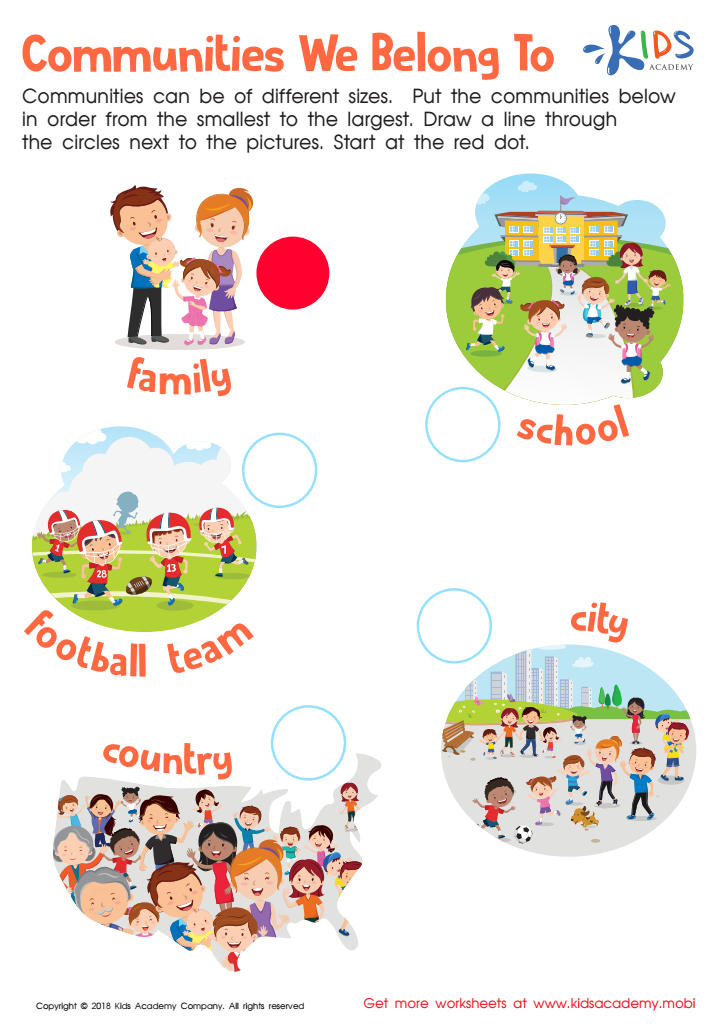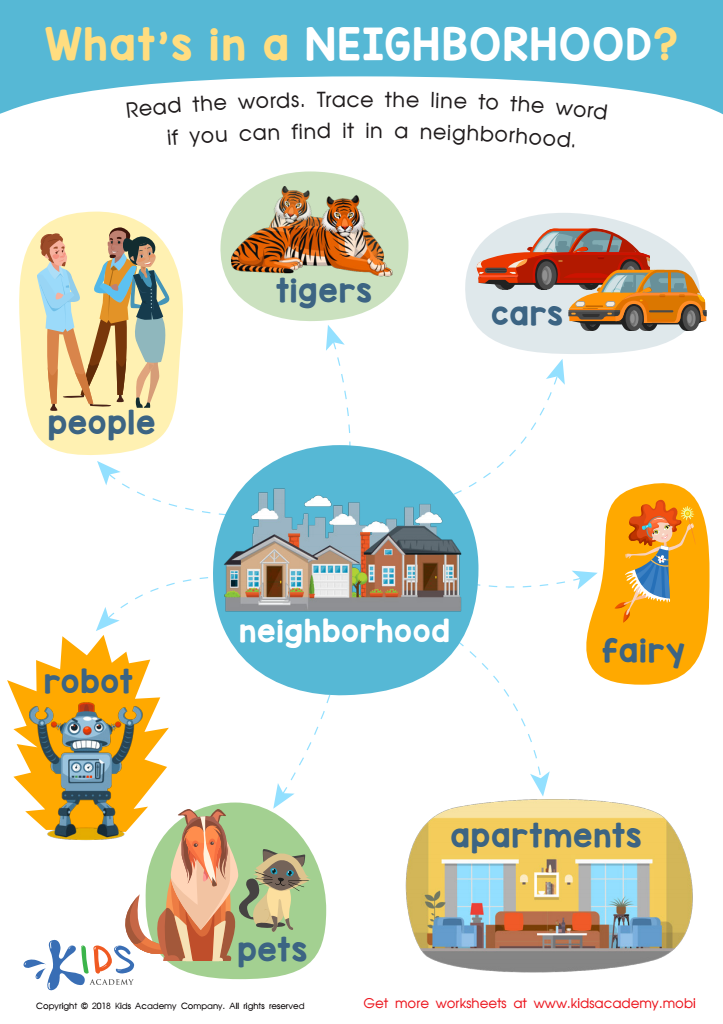Understanding communities Worksheets for Ages 6-8
5 filtered results
-
From - To
Discover our "Understanding Communities Worksheets" designed specifically for children ages 6-8! These engaging and educational resources help young learners grasp the concept of communities and the roles within them. Covering various topics such as community helpers, local geography, and the importance of teamwork, these worksheets encourage creativity and critical thinking. Each activity is crafted to promote understanding through fun illustrations and relatable scenarios, making learning enjoyable and impactful. Suitable for both classroom settings and home learning, these worksheets provide essential building blocks for social awareness. Equip your child with the knowledge of their community and inspire a sense of belonging today!


What is a neighbor Worksheet


Community: Neighbors Worksheet


Skip Counting by 10 through Different Communities Worksheet


Communities We Belong to Worksheet


What's in a Neighborhood? Worksheet
Understanding communities is crucial for children aged 6-8 as it lays the foundation for their social, emotional, and cognitive development. At this formative stage, children are eager to explore the world around them and develop a sense of identity. Engaging them in learning about their community fosters a sense of belonging, which is vital for emotional well-being.
Parents and teachers play a pivotal role in this exploration. By helping children understand the different components of their community—like families, schools, local businesses, and cultural institutions—they cultivate curiosity and appreciation for diversity. This understanding also promotes empathy and social skills, aiding children in building relationships and resolving conflicts.
Additionally, learning about communities helps children grasp basic concepts of geography, social systems, and civic responsibility. They learn why rules exist, the importance of helping others, and how different people contribute to the common good. These lessons are essential in shaping conscientious citizens who are aware of their roles and responsibilities.
Finally, the early introduction to community ties can inspire engagement in local activities and foster a mindset of active participation. Such knowledge empowers children, preparing them to thrive in an interconnected world. In essence, understanding communities equips children with the skills and values they need for lifelong learning and collaboration.
 Assign to My Students
Assign to My Students






















